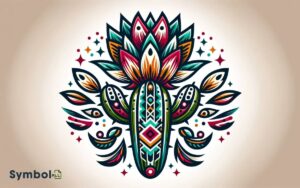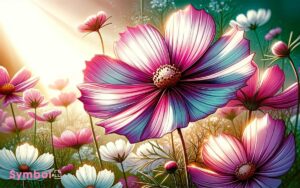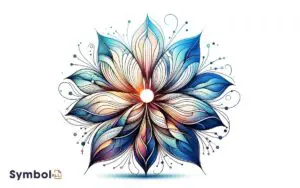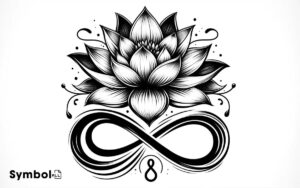What Does the Hibiscus Flower Symbolize? Beauty!
The hibiscus flower reveals beauty, symbolizing nature’s intricate design through vibrant colors and forms. It reflects a biological masterpiece, significant in reproductive strategies and adapted to diverse environments.
You’ll find it represents deep layers of love and attraction, connecting to human emotions and romantic expressions scientifically.
Additionally, it signifies hospitality and welcomes across cultures, embodying warmth and community.
Its fleeting bloom mirrors life’s ephemeral nature, symbolizing the passage of time and reminding you of mortality through transient beauty.
Furthermore, it signifies femininity, wealth, and success, connecting to metabolic support and cultural significance.
Exploring further uncovers profound connections between the hibiscus and human experiences across various domains.
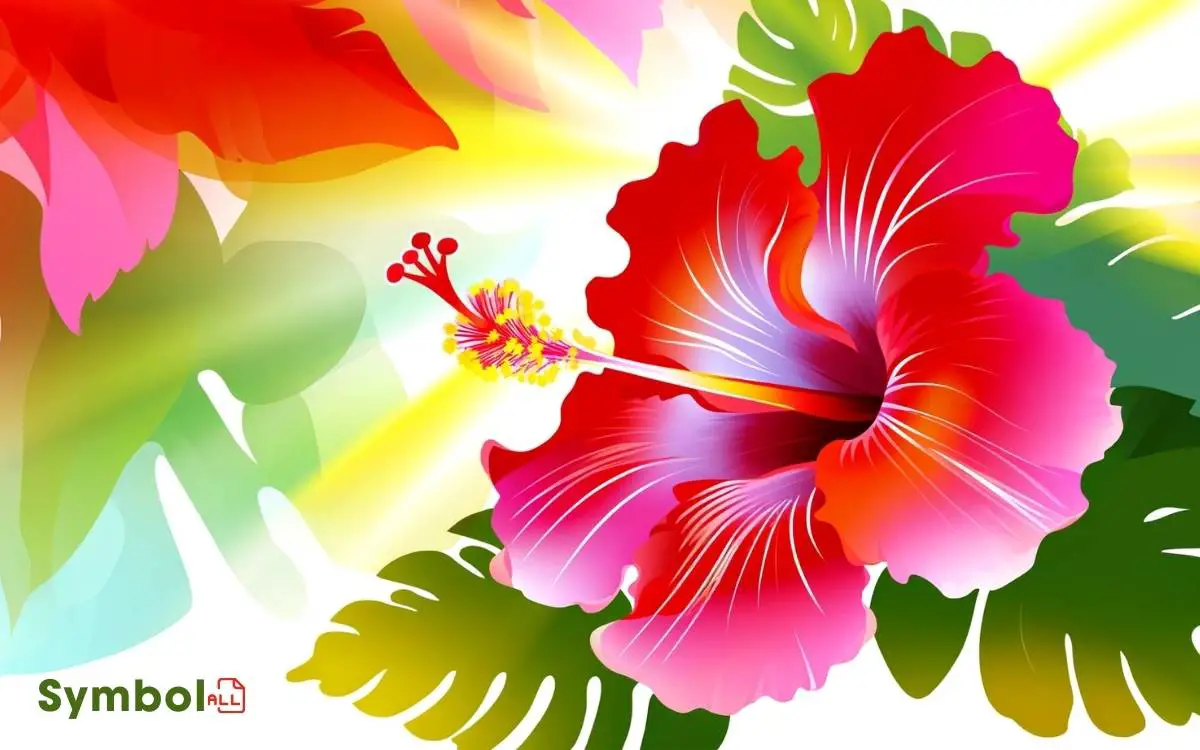
Key Takeaways
The Essence of Beauty
Capturing the quintessence of beauty, the hibiscus flower embodies an intricate blend of vibrant colors and delicate forms, reflecting nature’s meticulous craftsmanship.
Each petal, with its unique hue and structure, functions not merely as a visual spectacle but also serves a critical role in the plant’s reproductive strategy, attracting pollinators through its conspicuous display.
The hibiscus varies widely across species, presenting a spectrum from deep reds to bright yellows, each variation adapted to specific ecological niches, illustrating evolutionary finesse.
This diversity isn’t just aesthetic; it’s a proof of the plant’s resilience and adaptability, thriving in a range of environments.
The hibiscus doesn’t just symbolize beauty; it demonstrates nature’s ingenuity in design, where form meets function in a delicate balance.
Love and Attraction
You’ll find that the hibiscus flower embodies complex layers of meaning within the world of love and attraction. Its vibrant colors and unique shape have been scientifically linked to notions of romantic expressions, serving as a potent symbol for attracting a mate.
Studies suggest that the hibiscus’s visual appeal may activate certain psychological responses associated with desire and affection.
Romantic Expressions
The hibiscus flower, often symbolizing deep love and attraction, plays a pivotal role in romantic gestures across various cultures. Its vibrant petals and diverse hues communicate a spectrum of affectionate messages, from passionate love to gentle admiration.
| Culture | Symbolic Meaning |
|---|---|
| Hawaiian | Consummate love |
| Chinese | Glorious beauty and gentility |
| South Korean | Immortal love |
| European | Rare beauty |
| North African | Delicate beauty |
In scientific terms, the hibiscus’s morphology particularly its conspicuous, colorful flowers acts as a metaphor for the intensity and diversity of human emotions in romantic contexts.
This botanical analogy underscores the complexity and depth of love, mirroring the intricate interplay of biological and emotional factors in human attraction and attachment.
Attraction Symbolism
Hibiscus flowers serve as powerful symbols of attraction, embedding complex emotional and biological cues within their vibrant blooms.
These cues, deeply rooted in the flower’s aesthetics, emit signals not just to pollinators but symbolically to humans, suggesting a profound connection to love and attraction.
You’ll find that the hibiscus’s bright colors and large size aren’t merely coincidental; they’re evolutionary traits designed to attract.
In human culture, these characteristics have been paralleled to qualities of beauty and allure, making the hibiscus a perfect emblem for conveying affection and desire.
Scientifically, the flower’s mechanisms of attraction are akin to human behaviors in courtship and love, presenting a fascinating study of how nature’s patterns echo in human emotional expression.
Hospitality and Welcome
You’ll find that the hibiscus flower embodies warmth across numerous cultures, symbolizing an unwavering sign of hospitality.
Its vibrant colors and open petals are scientifically analyzed to create an inviting atmosphere, essential for welcoming spaces.
This significance isn’t merely anecdotal but rooted in detailed cultural and psychological studies.
Warmth in Many Cultures
Across various cultures, hibiscus flowers symbolize hospitality and welcome, reflecting a warm, inviting atmosphere.
- Hibiscus flowers, with their vibrant hues, serve as a universal symbol of warmth and openness, fostering a sense of belonging and community.
- The flower’s ability to thrive in diverse climates mirrors its adaptability in symbolizing warmth across cultures.
- Scientifically, the hibiscus’s wide petals are visually stimulating, which can subconsciously evoke feelings of warmth and welcome in humans.
- Culturally, the practice of gifting hibiscus flowers as a sign of hospitality is rooted in the flower’s association with generosity and mutual respect.
Understanding the hibiscus’s role in symbolizing warmth in many cultures provides insight into the complex ways in which humans interact with the natural world to convey deep-seated cultural values.
Inviting Atmosphere Significance
In many societies, the act of presenting hibiscus flowers has been scientifically linked to creating an inviting atmosphere, playing an essential role in expressions of hospitality and welcome.
This correlation isn’t merely anecdotal; it’s supported by studies in environmental psychology, demonstrating how specific floral arrangements can greatly alter human perception of space.
Hibiscus, with its vibrant colors and delicate form, triggers a psychological response that enhances feelings of warmth and reception.
Researchers have found that environments adorned with these flowers not only elevate mood but also foster a sense of belonging and ease among guests.
This effect is attributed to the hibiscus’s unique aesthetic qualities, which subtly communicate care, attention to detail, and a desire to provide comfort, making them a powerful symbol for hospitality across various cultures.
The Passage of Time
The hibiscus flower, with its fleeting bloom, serves as a potent symbol for the passage of time, emphasizing the transient nature of life.
Its lifecycle, from bud to bloom to wilting, mirrors the human experience of growth, flourishing, and inevitable decline. This botanical phenomenon underscores the importance of cherishing each moment.
- Ephemerality: Hibiscus flowers bloom for a short period, reminding us of life’s fleeting nature.
- Seasonal Changes: Their cyclical blooming pattern highlights the relentless forward march of time.
- Growth Phases: The stages from bud to decay symbolize life’s transient phases.
- Visual Reminder: The vibrant, short-lived beauty evokes a poignant awareness of our own mortality.
Femininity and Womanhood
Reflecting a deep connection to femininity and womanhood, the hibiscus flower symbolizes the strength and delicacy inherent in the female experience.
Its vibrant petals represent the diversity and complexity of women’s roles and identities, mirroring the multifaceted nature of womanhood itself.
Scientifically, the hibiscus’s reproductive parts, prominently displayed, underscore fertility and the creation of life, aspects traditionally associated with femininity.
Besides, the flower’s ability to thrive in various environments echoes the adaptability and resilience of women.
In cultural contexts, the hibiscus is often tied to goddesses and feminine deities, further cementing its association with female empowerment and divine femininity.
Through this lens, the hibiscus transcends its botanical identity, embodying the nuanced tapestry of femininity and womanhood.
Health and Healing
Hibiscus flowers, renowned for their vibrant beauty, also possess remarkable health and healing properties, offering both preventative and therapeutic benefits.
Through meticulous research, scientists have uncovered that these flowers aren’t just a feast for the eyes but a boon for your health as well.
- Antioxidant Rich: Loaded with powerful antioxidants, hibiscus helps combat oxidative stress and reduces inflammation, promoting overall well-being.
- Blood Pressure Management: Studies have shown hibiscus tea’s potential in lowering high blood pressure, essential for heart health.
- Liver Health: The bioactive compounds in hibiscus aid in liver protection, enhancing its ability to process toxins.
- Metabolic Support: Regular consumption can assist in improving metabolism, supporting weight management efforts.
Understanding these properties encourages a deeper appreciation of hibiscus beyond its aesthetic appeal, highlighting its significant role in promoting health and healing.
Wealth and Success
While not traditionally linked to financial gain, incorporating hibiscus in various cultural practices can symbolize and potentially attract wealth and success.
This association stems from the flower’s vibrant appearance and its perceived ability to thrive in diverse conditions, symbolizing both the resilience and prosperity desired in financial endeavors.
Scientifically, the hibiscus’s adaptability and growth patterns may serve as metaphors for economic strategies that prioritize flexibility and innovation.
Analysis of its role in symbolism suggests that the presence of hibiscus in personal or professional spaces could influence one’s mindset, fostering an environment where success isn’t only visualized but actively pursued.
Consequently, hibiscus transcends its ornamental value, embodying principles of wealth accumulation and the flourishing of ventures when strategically integrated into one’s surroundings.
Cultural Significance
Spanning across cultures, the hibiscus flower serves as a profound symbol, embodying meanings that range from honor and respect to love and beyond.
Its cultural significance is deeply rooted in traditions and beliefs, making it more than just a beautiful plant.
- In Hawaiian culture, the hibiscus symbolizes hospitality, welcoming, and a sense of belonging.
- In Hindu rituals, it represents the goddess Kali and signifies power, the fierce form of motherly love.
- In China, the hibiscus is associated with fame, wealth, and fleeting beauty, reminding us of life’s transient nature.
- In South Korea, it symbolizes immortality, an enduring legacy beyond physical existence.
These symbols reveal the hibiscus’s capacity to evoke profound emotional responses, highlighting its significance in various cultural contexts.
Conclusion
To sum up, the hibiscus flower embodies a multifaceted symbolization, integrating notions of beauty, love, hospitality, temporal change, femininity, health, wealth, and cultural significance.
Through a detailed analysis, it’s evident that this flower transcends mere aesthetic appeal, acting as a potent emblem across various dimensions of human experience.
Its widespread symbolic interpretations highlight an intrinsic connection between nature and human culture, showcasing how botanical elements can mirror complex societal values and emotions.
Therefore, the hibiscus serves not only as a visual delight but as a profound symbol enriching our understanding of human symbolism in nature.


